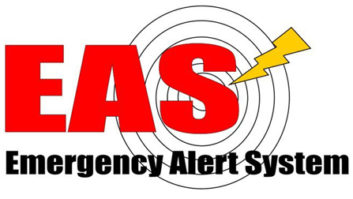The FCC’s desire to make alerts issued over EAS available in more languages is raising some technical concerns about the capabilities of the current technical architecture in EAS devices.
At its monthly meeting in February, the FCC will consider a draft proposal that, if eventually adopted, would create template alert scripts that would be pre-translated into the 13 most commonly spoken non-English languages in the United States — Spanish, Chinese, Tagalog, Vietnamese, Arabic, French, Korean, Russian, Haitian Creole, German, Hindi, Portuguese and Italian — as well as in English.
“If you are watching or listening to a program when an emergency alert is issued, you want that potentially life-saving information delivered in a language that you will understand,” said FCC Chairwoman Jessica Rosenworcel.
The pre-translated template-based announcements and audio files would be produced by the commission, and would be pre-installed in the EAS equipment operated by EAS participants.
However, comments on a listserv maintained by the Society of Broadcast Engineers shows some broadcasters are worried the current technical framework in EAS equipment at radio stations might be strained carrying out the FCC’s goals.
The draft proposal (PS Docket 15-94) if adopted would seek comment on the feasibility of “removing the technical and logistical barriers associated with EAS alert translation by proposing and seeking comment on a simplified multilingual alert processing approach for EAS alerts.
The proposal says any new template-specific event code would be added to the EAS protocol for each template alert type, for example an earthquake or wildfire. “We propose that alert originators would initiate the template alert in legacy or CAP like any other EAS alert, using the applicable template event code,” the draft proposal states.
An EAS device would then use that event code to tap into the appropriate template using the stored or linked audio in the languages that correspond to the language of the EAS participant’s programming content, according to the FCC.
The commission says participants would download and store the prerecorded audio files for the language(s) of their programming content, and any other languages they wish to include in their template alerts, in their EAS device.
The commission asks what storage capabilities would be required for 30 second messages created with 16 template audio files for each of the 13 proposed template languages, in addition to the English language version. The total would be 224 audio file
The FCC also would need to establish a process by which radio stations could broadcast the required English-speaking alert — or a language corresponding to its programming — then have the option to initiate a template alert in one of the supplied foreign languages if the local population within its listening area warrants it.
Among the questions the FCC will ask in the Notice of Proposed Rulemaking (NPRM) is how long would manufacturers likely require to develop, test and release updates, and at what cost to EAS participants? And if storage of template visual script and audio files in EAS device models would require addition of memory capacity via firmware update and at what cost?
The commission’s questions continue: “Would implementing the template alert processing approach present any unique challenges or require modifications with respect to EAS participant transmission processing systems upstream or downstream from the EAS device that would impact the time required for implementation?”
With so many unanswered questions, estimating the cost to make upgrades to EAS boxes is difficult, according to the FCC. It uses an aggregate of labor costs to arrive at an estimate of $12 million for the broadcast industry.
In addition, the FCC recognizes that there potentially could be costs associated with adding memory capacity, firmware and/or other modifications to EAS devices, and changes potentially could be required to downstream transmission processing systems.
It is also conceivable that there are some older EAS devices in use today that could not be updated or modified to enable template alert processing and transmission, the FCC says.
Commenters on the SBE listserv question the capability of existing EAS equipment to handle the proposed multilingual upgrades and the cost of modifying existing EAS boxes to do so.
Adrienne Abbott, chair of the Nevada State Emergency Communications Committee, questions the practical application of the FCC bilingual EAS plans.
She says it’s possible the FCC sees the language templates “living” in FEMA IPAWS OPEN office, where the CAP Aggregator would automatically translate the text and audio before passing the activation to the EAS Participants. “Broadcasters would preprogram their EAS equipment for the appropriate language for their audience. Is that possibility realistic?”
Abbott says the plan, if approved, would mean EAS equipment would need to be updated. “Of course, CAP programs will also need to be updated which takes the FCC into FEMA territory,” she says.
In addition, the draft NPRM is rather vague on the tangibles, Abbott says, including questions on how the language templates would be developed, and whether the languages used would be appropriate for the foreign language community.
“East Coast/Puerto Rican/Cuban Spanish is very different than TexMex Spanish, is very different than California Spanish, is very different than Nevada Spanish. There’s Puerto Rican Portuguese, Brazilian Portuguese and North African Portuguese. And there are multiple, individual dialects within the Chinese and Vietnamese languages,” Abbott says.
The FCC in the draft proposal concedes there is no single “Chinese” language, but rather a multitude of dialects, such as Mandarin and Cantonese. It asks in the proposal what mechanism would be practical and efficient for the commission to employ in identifying specific dialects in which to prerecord the audio messages?
The FCC will consider the NPRM and likely vote on it at its next meeting on Feb. 15.







